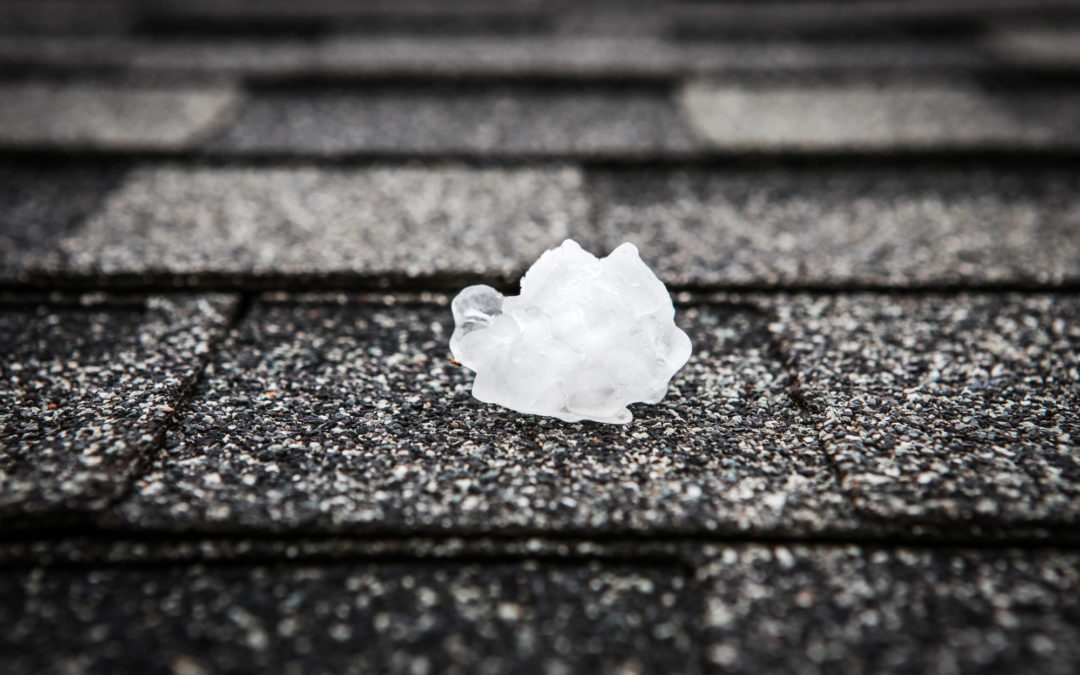If there’s one part of your home that takes a real beating over the years, it’s your roof. In fact, your roof is quite possibly the most vulnerable area of your home.
Physical impact during thunderstorms and hailstorms takes its toll on the materials of your roof. One of the best ways to avoid hail damage is by choosing the right type of roofing materials and regular roof maintenance.
Here are some of the best roofing materials and grade qualities in order to keep hail damage at bay.
A Quick Guide to Preventing Hail Damage
When a thunderstorm hits, that’s when we’re most grateful for the roof over our heads. But if your roof is unmaintained and neglected, it may not do the job it’s supposed to.
And more importantly, if your roofing material is not up-to-scratch, this can leave your roof in tatters.
A thorough inspection of your roof is extremely important in avoiding costly repairs. As soon as you notice wear and tear, it should be seen to.
But, first things first. The quality of your roof all depends on choosing the best roofing material grades, to begin with. Here’s how to make the best choice.
Choosing the Best Roofing Materials
When it comes to building a new home or replacing a roof completely, look for roofing materials rated as UL2218 or FM443. Alternatively, opt for class 3 or 4-grade materials.
Basically, these ratings indicate that each material has been tested for impact resistance and should hold up in a hailstorm.
The best roofing materials for high impact include:
1. Metal
While metal roofing is not all that common, this materials is lightweight and offers excellent longevity. Go for a metal roof rated by UL2218 or choose a class 4 rated product for impact resistance.
Keep in mind that metal roofs may not be fully punctured during a hailstorm, but can suffer some form of cosmetic damage and denting.
2. Tile
Tiled roofs are incredibly durable and offer a long-lasting roofing product. However, make sure to choose FM4473 or class 4 impact rated tiles.
Tile roofing is a little more porous than other roofing materials, so it’s also important to ensure your roof has been well sealed by professionals.
3. Asphalt
Asphalt shingles are the most common and highly popular roofing material by a mile. This is because they are low-cost, low-maintenance and simple to install.
Make sure you choose a UL2218 or class 4 rated asphalt shingle which has been tried and tested against impact resistance.
4. Slate
Slate is probably the most robust out of all roofing material and is able to withstand all types of weather. Go for a high-quality grade of slate, such as an FM4473 or class 4 rating.
The Slope of Your Roof
The direction and slope of your roof also play a major role in preventing any form of impact damage, especially hail damage.
If you live in a region which is prone to dramatic weather patterns, including hailstorms you may want to consider roof slope as a primary concern.
Steeply sloped roofs are ideal for reducing hail damage as hail tends to fall in a relatively straight path. The angle of a steeply sloped roof assists in deflecting the direct impact of hailstones – known as glancing.
When a Hailstorm Hits
It goes without saying that when a hailstorm strikes, you and all members of your family should be indoors!
Keep in mind that large hailstones can shatter windows, so it’s important to close your windows, drapes or blinds to reduce glass shatter. Keep away from exposed skylights and doors too.
In Need of Roof Restoration?
At Woodberg Restoration we are your local experts in Denver assisting with roofs that need a little TLC due to thunderstorm and hail damage. We offer truly professional workmanship and expert knowledge!
How do to tell when it’s time for a roof replacement? Check out this blog for more.

